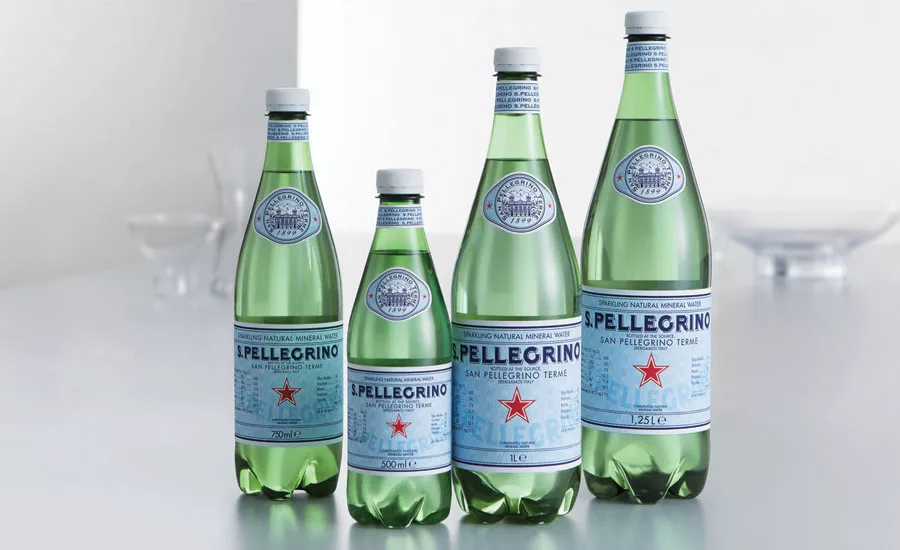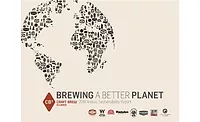Design, sustainability drive beverage packaging solutions
Brand owners turn to plastic, glass and aluminum can materials meet consumer needs

In today’s consumer packaged goods (CPGs) market, consumers face a myriad of food and beverage options from which to choose. In turn, brands must invest the same amount of time and energy into their primary packaging in order to stand out on crowded store shelves. Eye-catching, protective and sustainable materials are all attributes helping to drive numerous primary packaging markets.
Primary packaging materials like glass, plastic and aluminum offer these eye-catching, protective and sustainable features for beverage brands.
The demand for glass bottles will maintain its steady growth over the next five years [2018 to 2022], according to a September press release from Future Market Insights. By 2022, the global glass bottles market is anticipated to have reached a value of $71 billion, reflecting a [compound annual growth rate] CAGR of 4.9 percent, it says.
The plastic bottle manufacturing industry also is expected to maintain its stable growth. “After years of revenue volatility, growth in the plastic bottle manufacturing industry will stabilize over the five years [2018] to 2023,” according to Los Angeles-based IBISWorld’s December 2018 “Plastic Bottle Manufacturing in the US” report. “As the economy continues to grow and consumers increase their spending, downstream customers will increase their demand for plastic bottles. Consequently, over the five years to 2023, industry revenues is forecast to increase at an annualized rate of 1.2 percent to $13.7 billion.”
In contrast, the metal can and container industry is forecasted to decline in the next five years, IBISWorld states in its October 2018 “Metal Can & Container Manufacturing” report. “[The] industry will continue to decline over the five years [2018] to 2023, due to a variety of factors,” it says. “Decreasing per capita consumption of soft drinks and rising competition from plastic packaging are expected to reduce demand for aluminum cans.”
Addressing consumers’ wants
When deciding which type of primary packaging to utilize, beverage-makers evaluate numerous factors, experts note.
“Beverage manufacturers take into consideration various parameters such as the opportunity of the packaging material to offer brand differentiation and stand out on the shelves, the raw material cost-efficiency to remain competitive in the market, the sustainability aspect including the material’s recyclability and environmental impact,” says Franck Hancard, packaging product and process director at Sidel, Octeville-Sur-Mer, France. “Last but not least, they also consider the food safety it ensures for the drink.”
John Cullen, director of sales and marketing for PET resins at Charlotte, N.C.-based DAK Americas LLC, highlights the importance of the first impression when choosing a packaging material. “Grabbing the attention of the consumer in a complex shopping environment is a primary challenge for the beverage marketer,” he says. “The first impression must take place instantly and the packaging material is a critical element in that equation.”
PET packaging is well-suited for positive first impressions, Cullen notes. “PET’s transparency and bright, glossy surface have made it the preferred plastic packaging material because it helps sell the product,” he says. “PET also has the advantage of being a sustainable option for markets. When properly recycled, PET can be used many times to make new beverage containers or other products targeted for the consumer.”
Glass packaging also creates a positive first impression. “Brands are looking to packaging to differentiate,” says Joe Cattaneo, acting executive director at the Arlington, Va.-based Glass Packaging Institute (GPI). “Personalization, for example, is a trend made even more special with glass packaging. Beyond personalization, glass offers transparency, textures, shapes and styles that appeal to [consumers’] desire to purchase worthy packaging.”
Utilizing glass packaging allows for a multitude of design opportunities, from shapes and colors, to textured effects and decoration to help brands bring their stories to life and create an emotional connection with consumers, Cattaneo explains. “Glass packaging designs are a standout on store shelves and offer consumers a more sensory consumption experience,” he says.
“Glass bottles also offer consistency in quality and continuous innovation in product offerings,” he adds.
Sherrie Rosenblatt, vice president of marketing and communications at the Washington, D.C.-based Can Manufacturers Institute (CMI), also highlights the demand for eye-catching packaging. With distinctive graphics and shapes, aluminum cans can create a lasting impression among consumers, she says.
As consumers continue to shift their beverage preferences toward healthier options, the packaging industry is innovating to meet those shifts. “[W]e are witnessing the impact of a consumer’s lifestyle in the industry. For example, on-the-go consumption and healthy living are continuously increasing as trends, which [is] forcing the beverage industry to downsize the bottle format in some beverage categories like carbonated soft drinks and juice,” Sidel’s Hancard says.
DAK Americas’ Cullen also recognizes this trend. “One emerging trend is toward smaller package sizes to address healthy lifestyle choices,” he says. “The smaller volume allows the consumer to enjoy their selected beverage while managing their caloric balance.”
However, this can pose as a challenge to the PET packaging industry, as there is a need to deliver an extended shelf life in these smaller packages, Cullen says. The challenge is being met with new materials and processes that meet brand and bottler expectations, he adds.
GPI’s Cattaneo notes that as beverage brands are producing organic, clean label and other functional products, they want their primary packaging to follow suit.
Performance also plays a vital role in the primary packaging of beverages. “Manufacturers are looking for a bottle which can combine both an aesthetic and attractive design to stand out on store shelves, while [also] delivering a great performance,” Sidel’s Hancard says. “… The customer needs a bottle with safety properties able to protect the drink features and quality in the long term.”
CMI’s Rosenblatt also highlights the importance of cans on the packaging material’s performance. “The two biggest enemies for any beverage is light and oxygen,” she says. “Aluminum cans are effective in keeping out these damaging elements, locking in flavor.”
Other senses can be trigged by the aluminum can — from seeing the 360-degree brand advertising, to touching the cold beverage, and then hearing the cracking sound when opening the beverage. Triggering these senses leads to the transformation the drinker expects, she says.
A source of sustainability
As a plethora of eye-opening statistics regarding CPG pollution continue to arise, creating sustainable packaging now is more imperative than ever. Primary packaging manufacturers are realizing the consumer draw to sustainable materials and are innovating in order to be more environmentally conscious, experts say.
“The desire for sustainable packaging is a high value for consumers,” GPI’s Cattaneo says. “In a fall 2018 survey by G&S Business Communications for the Flexible Packaging Association, glass bottles and jars came out on top (57 percent) as the packaging format that U.S. consumers believe is most sustainable, followed by corrugated boxes (51 percent), metal cans (38 percent), flexibles (37 percent) and plastic (34 percent).
“While consumers know that glass is endlessly recyclable, reusable and resealable, 2018 saw a surge in the refillable bottle market,” he continues. “Glass refillables have the least environmental impact, the lowest carbon footprint, zero end-of-life waste and use a decreased amount of raw material.”
Refillable bottles can be used 25 times before being retired from circulation and recycled into new containers, while delivering up to 66 times less carbon dioxide emissions for each container compared with other container types, Cattaneo says. The cost for each filling also is reduced across the lifetime of the bottle, he adds.
PET producers also tout the material’s sustainable properties. “[M]any producers [have] decided to reduce their environmental footprint by drastically decreasing bottle weight, thereby reducing their raw material consumption,” Sidel’s Hancard says. “These initiatives often include the implementation of a shorter bottle neck and lighter caps.”
Through its sustainability efforts, Sidel has more than halved the weight of a 1.5-liter PET bottle, while increasing output speeds by two-and-a-half times, resulting in considerable savings in terms of raw materials and productivity, Hancard explains.
DAK America’s Cullen also points to the sustainable characteristics of PET packaging. “There is renewed interest in using plastic materials that are made from recycled ingredients or that can be recycled,” he says.
However, PET packaging has some associated challenges. “We don’t want the consumer to start associating PET or plastics with an environmental issue like litter or the lack of sustainability,” Cullen says. “[This issue] is driving the development of rPET [recycled PET] and bio-based, renewable offerings. The challenge for the industry is to improve education for consumers so that more PET is returned and reused.”
In the same manner, aluminum cans also provide recyclable features. “[C]an are infinitely recyclable,” CMI’s Rosenblatt says. “The recycled contact of aluminum cans average [about] 70 percent. The intrinsic value of aluminum allows cans to self-finance their own recycling with a value of more than $1,000 per ton. Meanwhile, less energy is required to produce and transport canned beverages, reducing the carbon footprint.”
Regardless of the container type, primary packaging manufacturers will continue to innovate to stay in tune with consumer needs. Creating reusable packaging without compromising taste and design will continue to drive the industry, experts note.
“The industry’s economic indicators are steady, and consumer sentiment shows glass remains on top as the packaging of choice for taste, health and sustainability,” GPI’s Cattaneo says.
The industry will continue to see a wider variety of beverage brands utilize cans as their packaging choice as they try to combat sustainability and performance issues, CMI’s Rosenblatt says.
The future also is bright for plastic producers. “We see continued growth for PET and plastics in general,” DAK America’s Cullen says. “The industry from the plastic producers to the converters to the brands/bottlers are very creative and there are new materials and packages in the pipeline that will continue to be attractive to the consumer.” BI
Looking for a reprint of this article?
From high-res PDFs to custom plaques, order your copy today!






